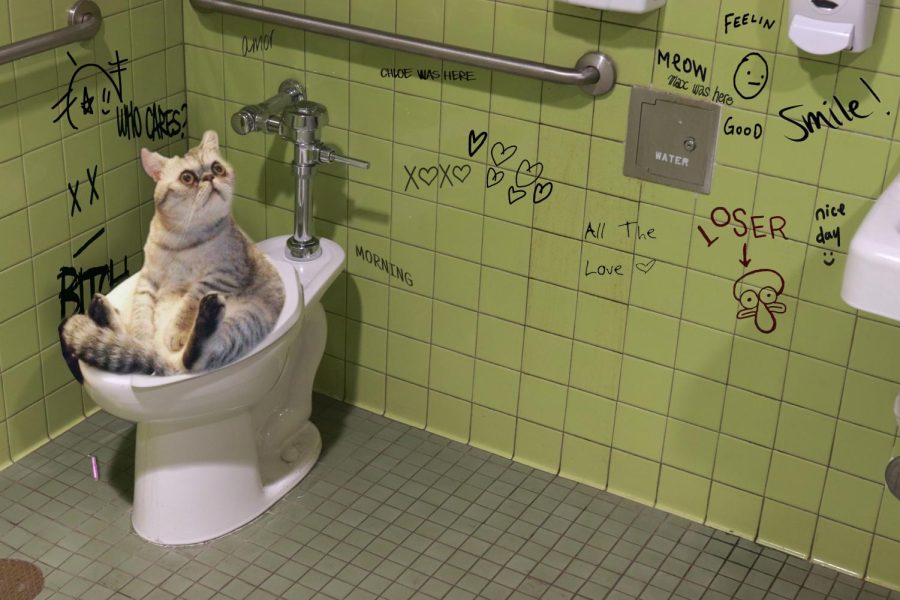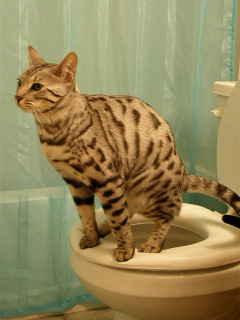Dangers of Flushing Cat Poop Down Your Toilet - Prevent Possible Issues
Dangers of Flushing Cat Poop Down Your Toilet - Prevent Possible Issues
Blog Article
We have come across this article about Don’t flush cat feces down the toilet listed below on the internet and felt it made perfect sense to write about it with you here.

Intro
As pet cat owners, it's necessary to bear in mind just how we take care of our feline friends' waste. While it might appear hassle-free to purge cat poop down the bathroom, this technique can have damaging effects for both the atmosphere and human health.
Ecological Impact
Purging feline poop introduces dangerous microorganisms and bloodsuckers into the water supply, posturing a significant threat to aquatic environments. These contaminants can negatively affect aquatic life and compromise water high quality.
Health Risks
In addition to environmental concerns, purging pet cat waste can likewise pose health and wellness risks to human beings. Pet cat feces might include Toxoplasma gondii, a parasite that can cause toxoplasmosis-- a possibly serious disease, specifically for expectant females and people with damaged immune systems.
Alternatives to Flushing
Thankfully, there are more secure and more liable methods to dispose of pet cat poop. Consider the adhering to alternatives:
1. Scoop and Dispose in Trash
One of the most typical method of dealing with pet cat poop is to scoop it into an eco-friendly bag and toss it in the trash. Be sure to utilize a dedicated clutter scoop and get rid of the waste immediately.
2. Use Biodegradable Litter
Go with biodegradable cat clutter made from products such as corn or wheat. These litters are environmentally friendly and can be securely thrown away in the garbage.
3. Bury in the Yard
If you have a backyard, consider burying feline waste in a designated location far from vegetable yards and water sources. Make sure to dig deep enough to avoid contamination of groundwater.
4. Set Up a Pet Waste Disposal System
Purchase an animal waste disposal system especially developed for feline waste. These systems utilize enzymes to break down the waste, lowering smell and environmental impact.
Conclusion
Responsible family pet possession expands beyond providing food and sanctuary-- it also entails proper waste monitoring. By refraining from flushing pet cat poop down the toilet and going with alternative disposal techniques, we can decrease our environmental footprint and secure human wellness.
Why Can’t I Flush Cat Poop?
It Spreads a Parasite
Cats are frequently infected with a parasite called toxoplasma gondii. The parasite causes an infection called toxoplasmosis. It is usually harmless to cats. The parasite only uses cat poop as a host for its eggs. Otherwise, the cat’s immune system usually keeps the infection at low enough levels to maintain its own health. But it does not stop the develop of eggs. These eggs are tiny and surprisingly tough. They may survive for a year before they begin to grow. But that’s the problem.
Our wastewater system is not designed to deal with toxoplasmosis eggs. Instead, most eggs will flush from your toilet into sewers and wastewater management plants. After the sewage is treated for many other harmful things in it, it is typically released into local rivers, lakes, or oceans. Here, the toxoplasmosis eggs can find new hosts, including starfish, crabs, otters, and many other wildlife. For many, this is a significant risk to their health. Toxoplasmosis can also end up infecting water sources that are important for agriculture, which means our deer, pigs, and sheep can get infected too.
Is There Risk to Humans?
There can be a risk to human life from flushing cat poop down the toilet. If you do so, the parasites from your cat’s poop can end up in shellfish, game animals, or livestock. If this meat is then served raw or undercooked, the people who eat it can get sick.
In fact, according to the CDC, 40 million people in the United States are infected with toxoplasma gondii. They get it from exposure to infected seafood, or from some kind of cat poop contamination, like drinking from a stream that is contaminated or touching anything that has come into contact with cat poop. That includes just cleaning a cat litter box.
Most people who get infected with these parasites will not develop any symptoms. However, for pregnant women or for those with compromised immune systems, the parasite can cause severe health problems.
How to Handle Cat Poop
The best way to handle cat poop is actually to clean the box more often. The eggs that the parasite sheds will not become active until one to five days after the cat poops. That means that if you clean daily, you’re much less likely to come into direct contact with infectious eggs.
That said, always dispose of cat poop in the garbage and not down the toilet. Wash your hands before and after you clean the litter box, and bring the bag of poop right outside to your garbage bins.
https://trenchlesssolutionsusa.com/why-cant-i-flush-cat-poop/

We were made aware of that editorial on Don’t flush cat feces down the toilet through an acquaintance on a different domain. Sharing is good. Who knows, you may be helping someone out. Thanks so much for your time spent reading it.
Need Help? Hire Us Now! Report this page